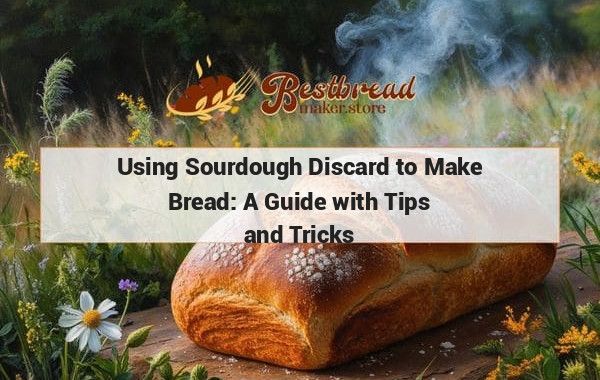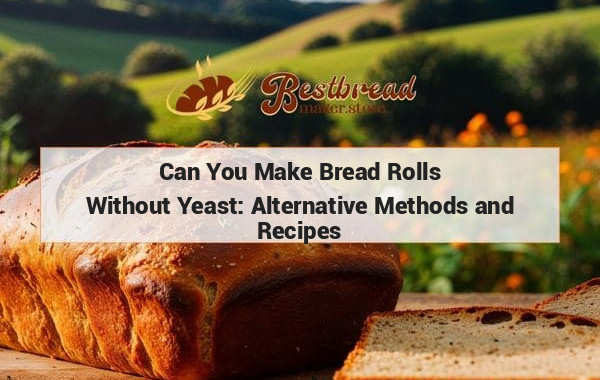Using Sourdough Discard to Make Bread: A Guide with Tips and Tricks
Yes, you can definitely use sourdough discard to make bread. Sourdough discard is the portion of sourdough starter that is removed before feeding. It can be used in recipes for bread, pancakes, waffles, and more. By incorporating sourdough discard into your bread recipe, you can add flavor and depth to your loaf while also reducing waste. Give it a try and experiment with different recipes to see how sourdough discard can elevate your bread baking.
Can You Use Sourdough Discard to Make Bread?
Sourdough discard is a versatile ingredient that many bakers wonder about. You can use sourdough discard to make bread, and it can be a great way to reduce waste while adding flavor and texture to your homemade loaf. The key is understanding how to properly incorporate it into your baking process for the best results.
Key Takeaways
Sourdough discard can be used to make bread, providing a tangy flavor and reducing waste. Use it alongside fresh flour and water for the best rise and texture. Experimenting with ratios may be necessary.
Using Sourdough Discard in Bread: What You Need to Know
Sourdough discard is the leftover part of your starter that is usually removed before feeding it again. This byproduct still contains wild yeast and lactic acid bacteria, making it perfect for adding flavor and fermentation power to your bread. However, it may not be as active as fresh starter, so adjustments are needed.
How Does Sourdough Discard Affect Bread?
When using sourdough discard, the flavors tend to be tangier and slightly more complex due to the lactic acid bacteria. However, because it might not be as active as a freshly fed starter, you may need to add a bit of commercial yeast to ensure your bread rises properly. Alternatively, you can allow for an extended fermentation time.
Tips for Using Sourdough Discard
- Add Commercial Yeast: If you're aiming for a well-risen loaf, a small amount of commercial yeast can be added to the dough. This helps compensate for any lack of activity in the discard.
- Longer Fermentation: Allowing the dough to ferment longer can also activate the yeast present in the discard, helping the bread to rise naturally.
- Adjust Flour Ratios: Sourdough discard may slightly alter the hydration levels, so you may need to adjust the flour-to-water ratio to achieve the right dough consistency.
Best Practices for Making Bread with Sourdough Discard
When making bread with sourdough discard, it’s crucial to plan your steps. The process is slightly different from using an active starter, but with a few adaptations, you can achieve a delicious loaf with a tangy twist.
Step-by-step Guide
- Prepare Your Ingredients: Gather flour, water, sourdough discard, and optional commercial yeast. Measure accurately for the best results.
- Mix and Autolyse: Combine flour and water and let it rest for 30 minutes. This helps gluten development.
- Incorporate the Discard: Mix in the sourdough discard along with a small amount of salt and optional commercial yeast.
- Knead and Ferment: Knead the dough until smooth and elastic. Allow it to ferment at room temperature for several hours or overnight in the refrigerator.
- Shape and Bake: Shape the dough, let it rise again, and bake in a preheated oven.
Common Variations When Using Sourdough Discard
Not all sourdough discard breads are the same, and experimenting with variations can bring out different flavors and textures. Here are a few popular types:
1. Whole Wheat Sourdough Bread
Whole wheat flour can be a great match for sourdough discard. The nuttiness of the whole wheat complements the tanginess of the discard, creating a rich and hearty loaf. You may need to increase hydration as whole wheat flour absorbs more water.
2. Rye Sourdough Bread
Rye flour works exceptionally well with sourdough discard due to its earthy flavor. When combined, they create a dense, flavorful bread that pairs perfectly with cheeses and cured meats.
3. Enriched Sourdough Bread
Adding ingredients like milk, butter, or eggs can result in a softer, richer loaf. This type of bread is ideal for sandwiches or toast.
Advantages of Using Sourdough Discard in Bread Making
There are several benefits to using sourdough discard:
- Reduces Waste: Utilizing discard reduces food waste, making it an eco-friendly option.
- Adds Unique Flavors: The tangy flavor profile of sourdough discard enriches the taste of your bread.
- Versatility: Sourdough discard can be used in many recipes beyond bread, such as pancakes, waffles, and crackers.
Troubleshooting Common Issues with Sourdough Discard Bread
Sometimes, sourdough discard bread might not turn out as expected. Understanding these issues can help you adjust your method for better results:
Problem: Bread is Too Dense
This is often due to the sourdough discard not being active enough. Try adding a pinch of commercial yeast or allowing the dough to ferment longer.
Problem: Bread Lacks Flavor
If the bread tastes bland, your discard may not be aged enough to develop the tangy flavor profile. Consider keeping your discard for a few extra days before using it.
Problem: Dough Is Too Sticky
Adjust the flour-to-water ratio. Sourdough discard can alter the hydration levels, so adding more flour can help achieve the right consistency.
How Sourdough Discard Compares to Active Starter
It’s important to understand the difference between sourdough discard and an active starter. While both can be used for bread-making, they have distinct characteristics.
- Activity Levels: An active starter is more powerful and will cause the dough to rise faster. Sourdough discard is less active and may need supplementation.
- Flavor Profile: Discard is tangier, which can enhance flavor but may not work for every type of bread.
- Fermentation Time: Bread made with discard often requires a longer fermentation period compared to using an active starter.
Choosing the Right Bread Maker for Sourdough Discard Bread
If you're planning to make sourdough discard bread at home, investing in a quality bread maker can simplify the process. The right bread maker allows for precise temperature and time controls, ensuring that your bread rises perfectly every time.
For those interested in exploring bread makers further, check out the recommendations at bestbreadmaker.store. They offer detailed reviews and comparisons to help you find the best machine for sourdough baking and more.
Frequently Asked Questions (FAQs)
1. Can I Freeze Sourdough Discard Bread?
Yes, sourdough discard bread freezes well. Make sure it is completely cool before wrapping it tightly in plastic wrap and placing it in the freezer. When ready to eat, thaw at room temperature or reheat in the oven.
2. Is It Necessary to Add Commercial Yeast?
While it's not strictly necessary, adding commercial yeast can help ensure the dough rises properly, especially if your discard is older or less active.
3. Can I Use Sourdough Discard from Different Types of Flour?
Yes, you can use discard from any type of flour. However, the flavor and texture might vary depending on the type of flour used in your starter.
4. How Long Can I Keep Sourdough Discard?
Sourdough discard can be stored in the refrigerator for up to a week. The older it is, the tangier and stronger the flavor will be.
5. Can Sourdough Discard Be Used for Gluten-Free Bread?
Yes, sourdough discard can be used for gluten-free bread as long as it’s from a gluten-free starter. Gluten-free flour options include rice flour, sorghum flour, and buckwheat flour.
Making bread with sourdough discard is a great way to reduce waste while enjoying delicious, homemade bread. With a bit of experimentation and the right equipment, like those recommended on bestbreadmaker.store, you can master the art of sourdough discard baking.








